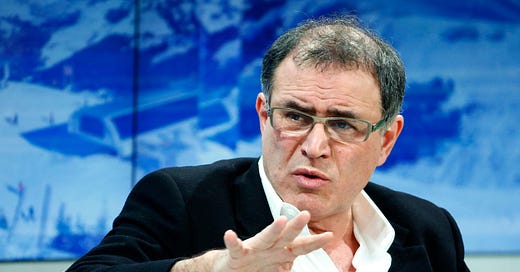Stagflation, Debt Crisis, and a 50% Crash on Wall Street Await Us According to Nouriel Roubini.
Dr. Doom is more than pessimistic about the coming months.
Nicknamed “Dr. Doom”, the American economist Nouriel Roubini has never worn his nickname so well. The man who predicted the explosion of the subprime bubble and the collapse of the real estate market that led to the financial crisis in 2008, paints a more than bleak picture of the months to come in America.
For Nouriel Roubini, there is no doubt that the…
Keep reading with a 7-day free trial
Subscribe to Sylvain Saurel’s Newsletter to keep reading this post and get 7 days of free access to the full post archives.




